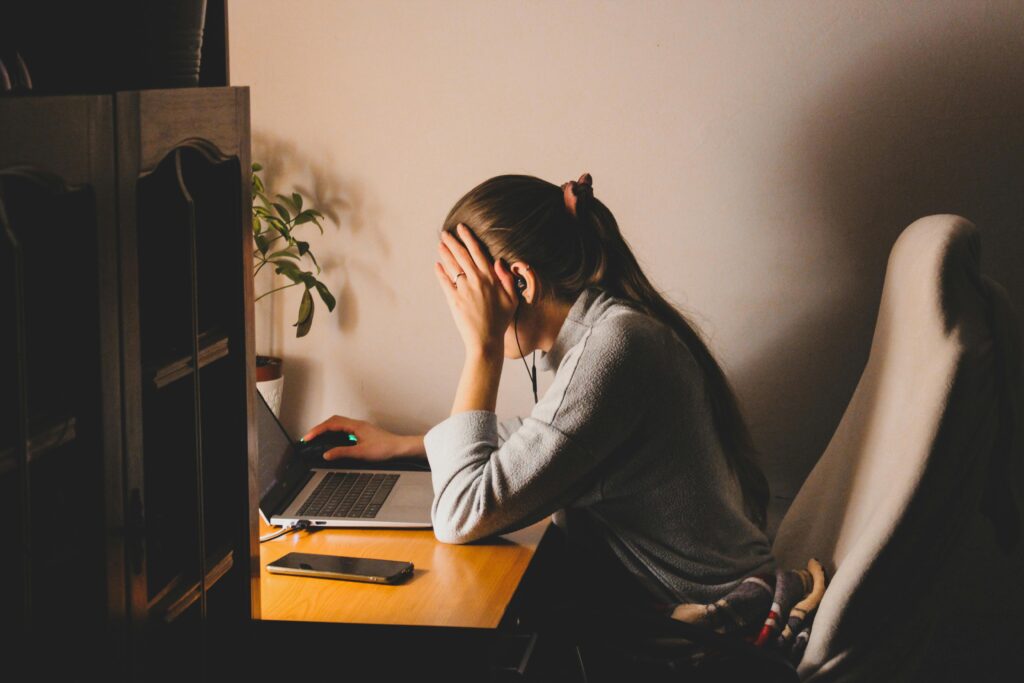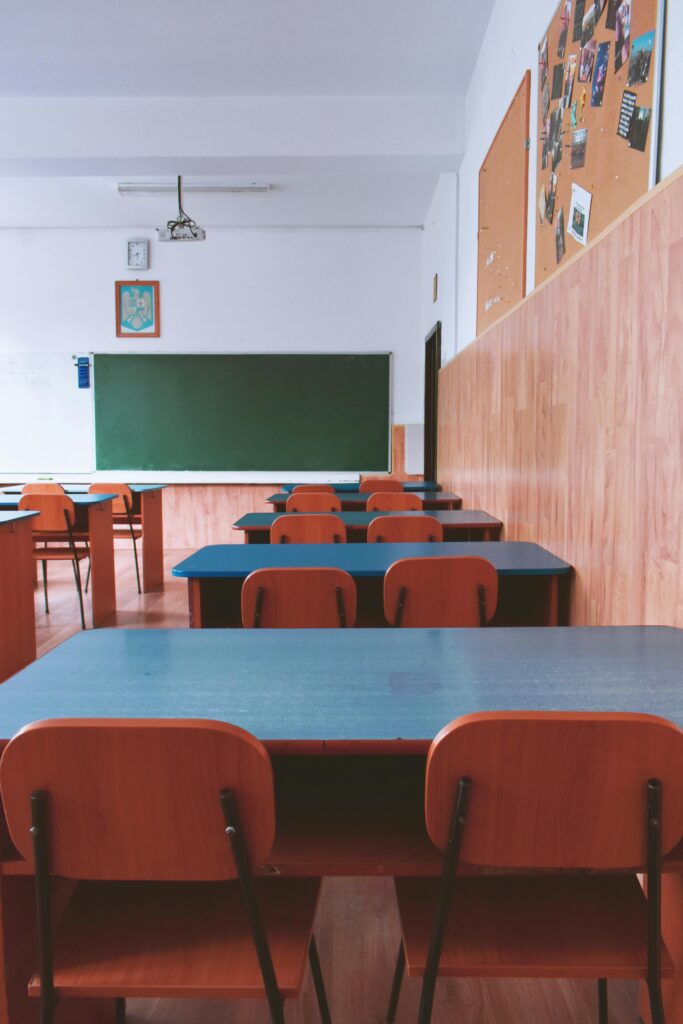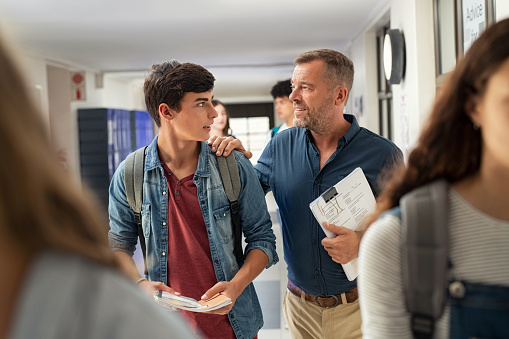
Student Contributors: Ava Moga, Zoe Schmitt, and Emma Wong
Challenge Success Contributors: Sarah Miles and Drew Schrader
Our Project
As students, our project began three years ago during our sophomore year of high school. We attend an academically and athletically competitive high school in northern California—one often referred to as the “pressure cooker” of our district.
On top of this, balancing academics and athletics with friends, relationships, and extracurriculars made everything more overwhelming—too many things and not enough time. Moreover, many of our tests required heavy memorization and recitation skills. We felt disconnected from our peers because we spent so much of our time studying terms rather than talking about in-depth concepts.
That year, however, we found a sanctuary in Ethnic Studies: a newly introduced class that featured discussions rather than tests. In that class, we felt engaged because there was no “right” or “wrong”—every person’s opinion mattered, and discussions facilitated conversation and curiosity, not a fear of making errors.
For our Ethnic Studies final, we were tasked with developing a project that would make an impact or improve a problem in our community. We brainstormed what we might do, then realized that the problem to fix was right in front of us. Indeed, we realized many our our peers were also talking about feeling “burnt out” – having a severe lack of motivation, running on little sleep, and feeling frequent anxiety over tests and grades.
We had guesses about how widespread burnout was among our peers, but we didn’t really know if feeling burnt out was a problem of the minority or the majority of students. We set out to both measure just how prevalent this “burnout” was and to start a conversation in our school community to raise awareness about burnout and possible solutions.
Our Process
At the beginning of each survey, we described burnout with its definition from the National Institute of Health: “feelings of chronic stress and mental exhaustion resulting from an overwhelming amount of work in one’s daily schedule.” Looking at other sources, we identified common symptoms of academic burnout, such as chronic absences. Prior to starting the survey, we had each student list their name (an optional choice) and grade.
In the survey, we asked students questions relating to their experience with burnout, factors that they felt worsened or alleviated their burnout, and how comfortable they felt reaching out to teachers and family about their burnout (see Appendix for full list of questions). For instance, we asked them to rate on a scale of 1-5 how often they had experienced burnout, and to list how many hours they dedicated to homework and extracurriculars each day. We also opened up room for free-response, with questions such as “As of right now, are you stressed academically, socially, or athletically? If you’re stressed, what worries you most?” Finally, in the last portion of our survey, we asked students to list possible systemic solutions—such as changes by administrators or teachers—that they thought would lessen burnout at Miramonte High School.

What We Found
At Miramonte High School, approximately 30% of the student body—over 300 students—reported experiencing symptoms of academic burnout. Notably, 72% of surveyed students rated themselves as feeling burnt out “regularly” (a score of 3–5 on a five-point scale), suggesting that moderate to severe levels of burnout are a persistent issue rather than an occasional occurrence.
Time commitment appears to be a significant factor. On average, Miramonte students spend two to three hours per day on homework and an additional two to three hours on extracurricular responsibilities, including sports, part-time jobs, and other activities. This amounts to over five hours of obligations outside of class time, often at the expense of sleep, social interaction, and restorative leisure—three elements consistently identified by institutions such as the Harvard Graduate School of Education as critical in mitigating teen burnout.
When asked whether they felt burnt out “right now,” 54% of students responded affirmatively in May 2023.
That number increased to 60% by March 2024. While the rise may reflect a growing trend, possible confounding variables include the timing of survey administration. The March 2024 survey, for instance, coincided with AP exam preparation season and included a higher proportion of seniors, many of whom may have been experiencing what is colloquially referred to as “senioritis.”
Student Testimonies and Academic Pressure
Qualitative responses from Miramonte High School further highlight the burden placed on students by academic assessments. Multiple students identified major tests as the most significant contributors to their stress levels, particularly when scheduled in close succession. This concern is compounded by the school’s grading policy, which places a greater emphasis on test performance than on homework completion. As one student noted, “The aspect of classes that worries me the most is overall grades, especially as affected by big tests.”
The stress associated with Advanced Placement (AP) coursework is also considerable. According to the 2022–2023 school report, on average, students at Miramonte High School take more than 7 AP or Honors courses over their four years. Many students described a direct correlation between the number of AP courses taken and their levels of burnout.
“It’s so exhausting keeping up with all of them, even though I only take six periods. All my time is spent either studying or applying to college.”
Additional Stressors
While academics were the dominant source of stress, several other contributing factors were also identified. Family and peer pressure—both explicit and implicit—were frequently mentioned. One student shared, “It seems like there is a lot of pressure to constantly maintain straight A’s in all classes,” while another stated, “I feel like all my friends are geniuses, so whenever I get a test grade and they begin saying theirs, I feel bad about my own.”
Extracurricular activities such as sports were also cited as stress amplifiers, particularly when they interfered with academic preparation. “It is stressful, especially if I have a test, quiz, or presentation that I have less time to prepare for because of sports,” one student explained.

Additional stressors included standardized test preparation and the ongoing pressure of college admissions. The process of comparing academic and extracurricular achievements with peers was frequently described as emotionally draining. As one student succinctly put it, “College apps are probably the worst in terms of comparing what you’ve done to what other people are doing or have done.”
Are Miramonte Students Different From Other High Schools?
We wondered if the data we collected was similar to that of other high schools. We met with staff members of Challenge Success, a non-profit organization affiliated with Stanford University’s Graduate School of Education to ask them what they have learned about burnout and stress related to school. From what the researchers at Challenge Success shared with us, we found that Miramonte High School’s data is consistent with data collected from Challenge Success- Stanford Survey of Student Experiences, which has been administered to hundreds of thousands of high school students for more than a decade. An analysis of Challenge Success high school survey data from similar timepoints (Spring 2023 through Spring 2024) to the data gathered from Miramonte students indicates that 84% of students reported physical health symptoms due to stress. And, of those 84%, indicated exhaustion, 60% indicated difficulty sleeping, and 56% indicated headaches as the most common symptoms.
In addition, when high school students in the Challenge Success sample were asked how often they feel academic pressure, 77% reported they feel pressure to do well in school often or always, and 68% often or always worry about school assignments. Similarly, when students were asked what their main sources of stress are, 69% indicated grades, tests, quizzes or other assessments, and 59% indicated overall workload or school assignments.
High school students in the Challenge Success survey were asked how much time they spend on homework on a typical weekday and weekend. They reported an average of 2.5 hours of homework on weekends and almost 3 hours on a typical weekend. Seventy-two percent reported that they often or always felt stressed about their homework. Students reported an average of almost 7 hours of time spent on extracurricular activities during a typical week and almost 3 hours on the weekend.
When comparing the data we collected from students at Miramonte High School to the Challenge Success survey data regarding stressors other than grades, workload, and tests, there were some similarities but also some differences in the top sources of stress. Procrastination and time management (53% of students) and future plans (53% of students) were the third most common sources of stress. Fifty-percent of students indicated lack of sleep was a major source of stress while 43% indicated lack of time to spend with family and friends was a major source of stress.
Sharing the Results
Beyond our research, we’ve actively worked to share our findings and foster a more supportive environment within our school community and beyond. We presented our project to over 70 staff members, including our principal, and more than a dozen parents, aiming to cultivate empathy and support for students experiencing burnout. We also initiated conversations directly with our peers by presenting in the school’s Wellness Center, providing a safe space for students to discuss their experiences. To broaden our reach and disperse our message and awareness to a wider student audience, not just within our school, we developed and published a video podcast in collaboration with Challenge Success.

Our research, combined with student feedback, points to several strategies for building resilience and mitigating burnout.
Based on our observations, we found that student burnout is typically the result of prolonged, unmanaged stress rather than a single overwhelming event. It often begins with sustained academic pressure—tight deadlines, heavy course loads, and the competitive expectation to participate in multiple advanced classes and extracurriculars. Within this environment, high levels of stress are normalized and even praised as indicators of future success. However, when stress becomes chronic, it leads to deteriorating sleep patterns, increased procrastination, and a gradual decline in motivation. Over time, tasks that once felt manageable begin to feel insurmountable. We feel that the critical tipping point is often reached when a student’s workload simply becomes impossible to manage, leading to feelings of helplessness and disengagement. In severe cases, this manifests in school avoidance, academic withdrawal, and significant mental health challenges.
Top Student Tips for Avoiding Burnout in High School
A recurring theme from students was the critical importance of prioritizing sleep. This emphasis on healthy sleep contrasts sharply with some less healthy coping mechanisms students reported, such as relying on caffeine, skipping school, or simply “toughing it out” until burnout inevitably strikes. Students also highlighted the benefit of pursuing their passions outside of school and spending time with friends and family outside of an academic context. Many expressed a desire to keep college and academic conversations away from the dinner table, at least for a while, to create a more relaxed home environment.
Students advocated for different ways of learning that move beyond traditional, test-heavy approaches. They suggested incorporating more projects, discussions (much like our Ethnic Studies class), and opportunities to develop artistic skills, such as posters. In fact, our Ethnic Studies class was the inspiration for us to make positive change because we felt like our ideas were being heard during discussions. As a result, we were motivated to do research, communicate with teachers, and advocate for change—all positive skills that don’t have to be associated with tests and grades. If more classes foster discussions like these, then students can take action in their communities and feel motivated to be engaged.
One solution emerged as a crucial component for addressing student burnout at a school level: improved student-teacher communication. Students consistently emphasized the need for teachers to offer specific guidance on study tools and the exact test format, detailing how they can best prepare for their particular class. Even more significantly, students expressed a strong desire for teachers to be openly receptive and empathetic when discussing their stress levels.
Creating an environment where students feel comfortable approaching their teachers about academic pressures, without fear of judgment, is paramount to building a truly supportive and resilient school community. Combining this with student-parent communication, we visualize a three-way path that allows students to discuss stressors with trusted adults in a manner that initiates positive change and helps teens learn adaptive coping, ultimately crucial in ending the cycle of burnout.
